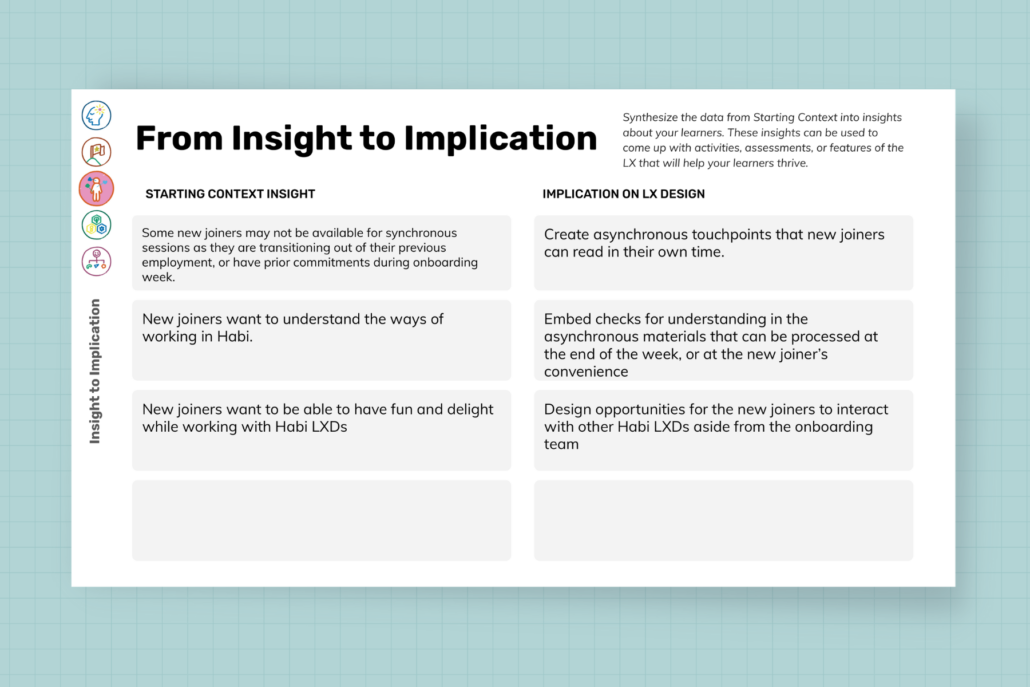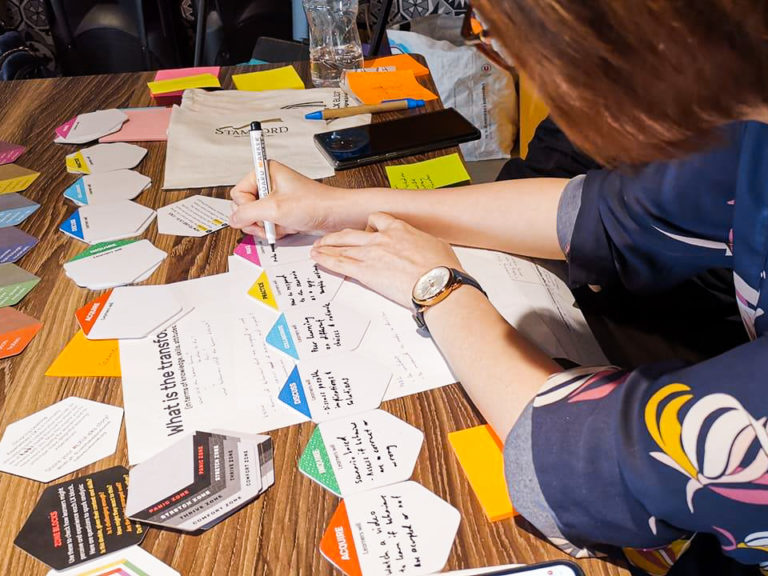How can we start creating well-designed learning experiences? The Elesi Design Space is a worksheet that takes us through a five-phase LX Design process called MISMO, a framework we developed over the COVID-19 pandemic based on human-centered design and our own thinking and building process in Habi.
In this article, I’ll show how we used MISMO to design the onboarding process for our latest batch of new hires.
Mindset
A mindset is made up of beliefs, values, strengths, and principles. It affects the way we see the world around us and influences the way that we design. In this phase, we articulate the things we bring into the LX, grounding it in what we’re good at and what we believe in. When we find ourselves stuck, going back to our mindset can help us make decisions that will move us forward.
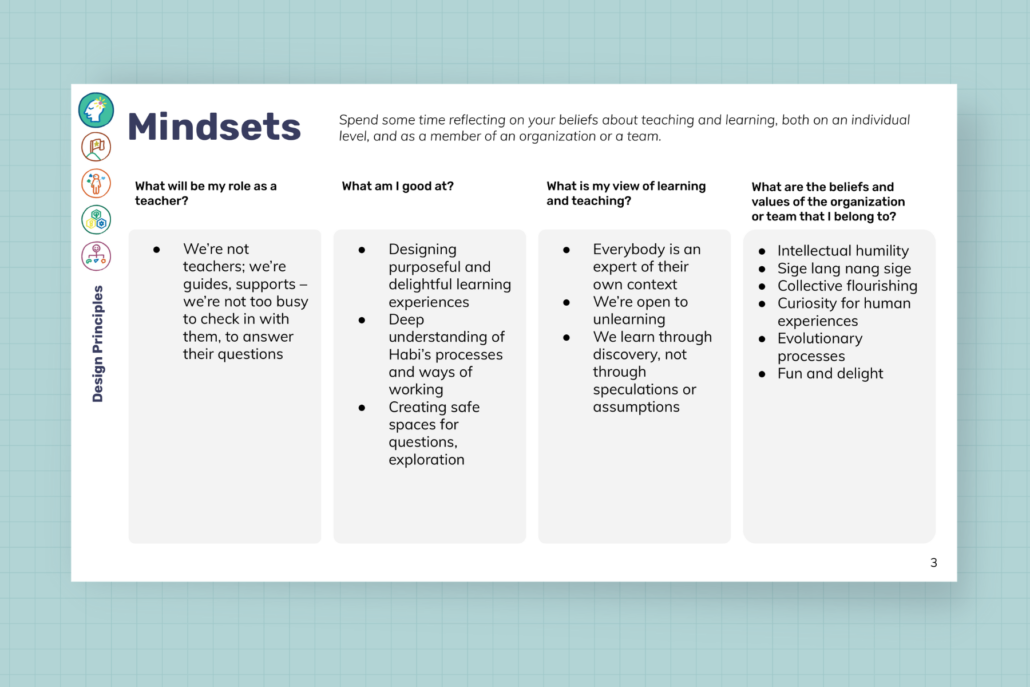
We’re still working mostly from home so it was important for us to establish a strong connection with the new joiners in spite of the distance.
Tips:
- Consider influences. Think about your own beliefs, but think about your school or organization’s values as well.
- Align mindsets with your team. If you’re working with a team, knowing one another’s mindsets and aligning on which ones to use as a team will make it easier to collaborate.
Intended Outcomes
Beginning with the end in mind keeps the learning experience grounded on purpose. In the Intended Outcomes phase, we describe the learning goals. Think about the changes we want to see in our learners after they go through the experience: what do we want them to know? What do we want them to be able to do? How do we want them to feel?
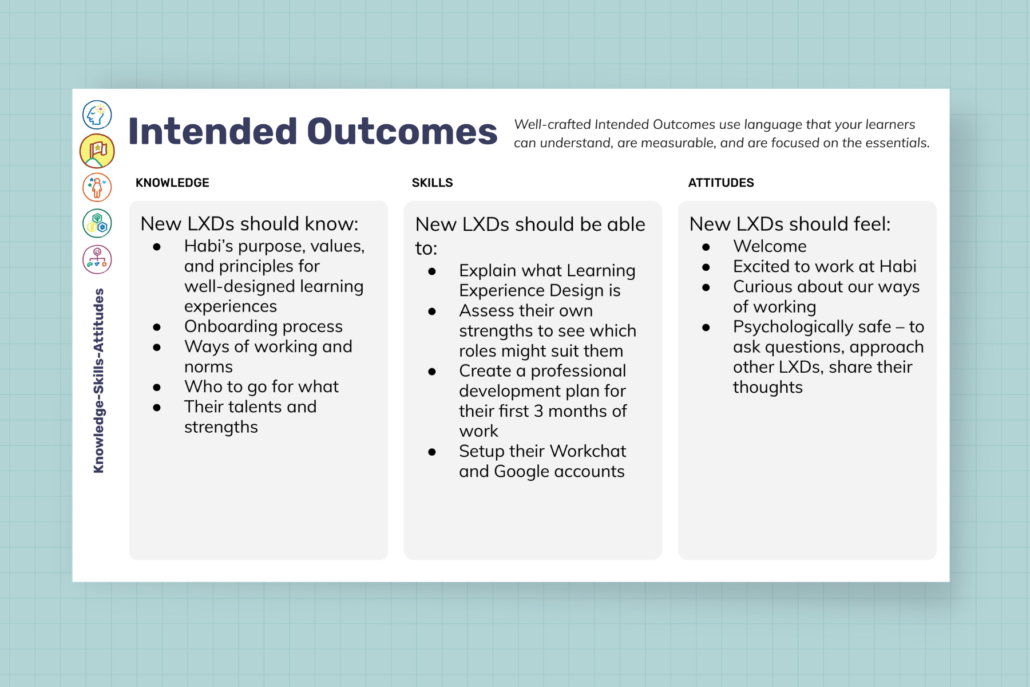
We frame Intended Outcomes in language that our learners can understand so they can keep track of their own learning.
Tips:
- Use language that your learners can understand. When learners know the goal, they’re more able to keep track of their own learning.
- Make measurable outcomes. Your learners should be able to demonstrate the outcomes through activities and assessments.
- Keep it simple. Identify the most essential outcomes to keep the LX manageable.
Starting Context
Starting Context is about empathizing with the learners and meeting them where they are. Empathy is a key principle of design and helps us understand how our learners experience the world around them. We unpack our learners’ starting context by stepping into their S-H-O-E-S:
Strengths. When we consider what our learners already know, what they’re good at or what assets they have, we can design LXs that they can thrive in.
Hopes. What are their aspirations in life? Think about what matters to them and how we can connect these to the learning goals so we can tap into intrinsic motivation.
Obstacles. What might prevent them from achieving the intended outcomes? These can be things like access to technology, a fixed mindset, or other barriers.
Everyday Activities. Imagine what their day might look like. Understanding this can help us identify the best moments for learning.
Spaces. Think about where our learners will be when they go through the LX. Visualize their physical and digital space, even their social and cultural space. These all influence the LX.
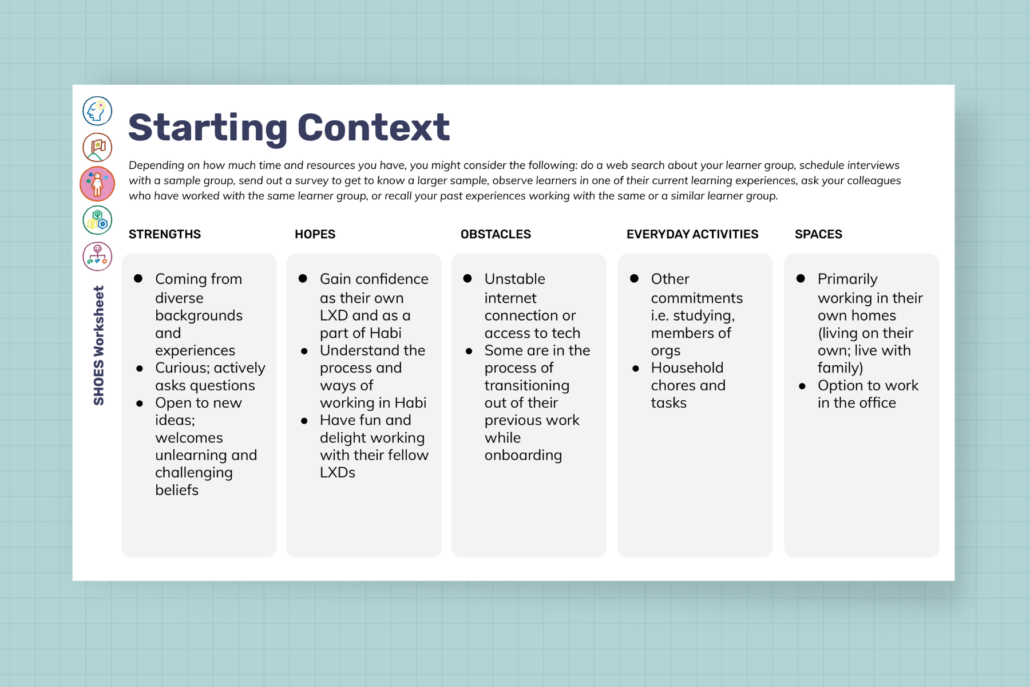
To create the Starting Context worksheet for our new hires, we looked at their CVs, cover letters, and interview responses!
Tips:
- Start with what you know. You may already know a lot about your learners from your day-to-day interactions but don’t forget to verify these! This exercise can also reveal what you don’t know about your learners. You can use SHOES to guide interviews, surveys, and observations.
- Think about them as people, not just learners. Our learners can be parents, teachers, daughters, and sons. These identities can affect and influence their learning journey.
From Insight to Implication
At this point, you’ve done a lot of reflecting on the different factors that can influence the learning experience. It’s time to take a pause and make sense of all this information. Take note of patterns in your learners’ Starting Context and what implications they might have on our design?
Modular Steps
In this phase, we actually build the learning experience. “Modular” means starting with smaller parts, which will eventually make the whole. To help us build the Modular Steps of our LX, we use the 6 Learning Types identified by Dr. Diana Laurillard in her Conversational Framework. The 6 Learning Types refer to the six kinds of interactions that can happen in any LX.

We use our responses in M-I-S to inform the modular steps of the LX. Breaking the LX down into modular steps makes it easy to move activities around and replace them, ensuring good flow.
Tips:
- Generate, then evaluate. Often we get stuck because we feel like we have to create the perfect first version. One way around this is by using the blocks to capture all the ideas we have for activities no matter how rough they can be. After writing them all down, we can go back to our M-I-S to determine which ones match our needs.
- Work as a team. Use the blocks to brainstorm with your colleagues. Start by briefing them about the purpose (M-I-S) so they can contribute more substantial ideas to the LX.
- We don’t have to use all six learning types. There isn’t one learning type that’s better than all the others either. All learning types have a purpose and their pros and cons. Being a LXD involves intentionally selecting learning types that will help you achieve your intended outcomes while keeping your learners’ contexts in mind.
- Use the Elesi Tools. Check out our Tech Tools Kodigo and Design Patterns board to kickstart your building process.
Options and Alternatives
The goal of this phase is to ensure that every learner feels included and valued. Our learners can have differences (in beliefs, backgrounds, even brains!) that can lead to different barriers to learning. Inspired by Universal Design for Learning, or UDL, we maximize learning for everyone by creating alternative ways in –
- Presenting information;
- Engaging learners;
- Allowing learners to express themselves.
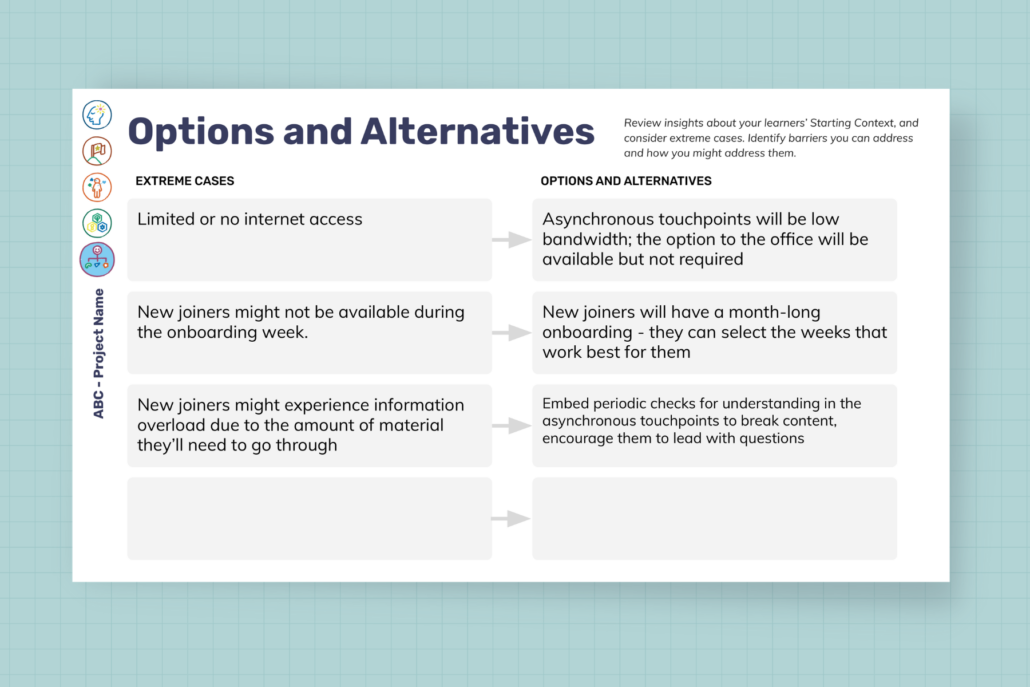
By presenting options, we give our learners the agency to choose the learning pathways that they can thrive in.
Tips:
- Ground your barriers on Starting Context. There are so many possible barriers that thinking of them can get paralyzing. Keep moving forward by going back to your Starting Context worksheet to identify the possible barriers for your particular set of learners.
- Acknowledge your limits. The reality is that we may not be able to remove all barriers to learning. It’s good to ask “which accommodations will have the most positive impact on most of my learners?” to help you decide which options to offer. Remember that it’s better to make small steps towards inclusivity than feel like you have to be perfectly inclusive immediately.
- Have a buffet mindset. Instead of trying to create “set menus” or a single pathway for every kind of learner, consider designing different options and helping learners choose which ones work best for them.
- Practice! Use this “What If” tool to generate different use cases and scenarios to help stretch your thinking.
And there you have it — a learning experience! It’s important to remember that MISMO is an iterative and non-linear process; after filling out the Modular Steps and Options and Alternative pages, you can always go back and check if they match your Mindset, achieve the Intended Outcomes, and address your learners’ Starting Context. You can also update your design space with feedback, and more information as you learn them.
Download the Elesi Design Space at design.habieducationlab.org. Throughout our anniversary month, we’ll be updating the website with tools and resources that you can use to create well-designed learning experiences for your own contexts. Check it out and don’t forget to tell us how you used MISMO!

